Resonant fs four wave mixing
Resonant fs-time-resolved multi colour four-wave mixing relies on time delayed resonantly enhanced interactions of photons with a molecular ensemble.The advantage of using different transition frequencies is that it allows a variety of excitation schemes. The involved electronic states are typically connected by one-photon allowed transitions. The evolution of the induced macroscopic polarization in the ensemble freely evolves between the laser pulse interactions. Depending on the timing and the resonance conditions, distinct molecular dynamics and relaxation processes can be monitored [1-3].
[1] M. Schmitt, G. Knopp, A. Materny und W. Kiefer, J. Phys. Chem. A, 102, 4059, (1998).
[2] G. Knopp, I. Pinkas and Y. Prior, J. Raman. Spectrosc., 31, 51-58, (2000).
[3] J. Feader, I. Pinkas, G. Knopp, Y. Prior and D. J. Tannor, J.Chem. Phys., 115, 8440-8454, (2001).
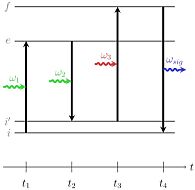
|
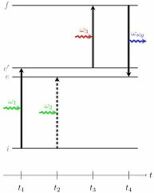
|
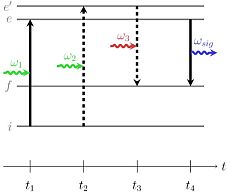
|
Figure: Three possible excitation schemes ("Albrecht" diagrams) for fs UV FWM.
Three laser pulses, which are tuned to match specific molecular resonances, probe different dynamics when different time orderings are used.
 |
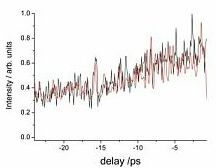 |
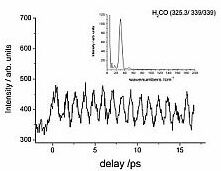 |
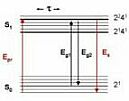 |
Figure: UV fs resonant (339/339/325.2 nm) FWM signals from H2CO in the gas phase.